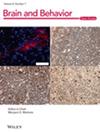Influences of Gait Training with Knee–Ankle–Foot Orthosis on Gait Ability and Independence in Severe Hemiplegia and Pusher Behavior with Unilateral Spatial Neglect Following Stroke: A Retrospective Historical Controlled Study
Abstract
Background
Orthotic therapy is crucial for post-stroke patients with severe motor paralysis and higher brain dysfunction, including pushers and unilateral spatial neglect (USN). These patients exhibit impaired postural control and compromised independence in activities of daily living (ADLs), often necessitating mid- to long-term intervention using knee–ankle–foot orthoses (KAFOs). However, the influences of extended orthotic intervention in severe and pusher cases remain unclear. The purpose of this study was to examine the influences of KAFO on walking ability and independence in severe hemiplegia with pusher and USN and pusher cases who wore KAFO and performed training routinely for more than 3 months.
Methods
This longitudinal, retrospective, and historical controlled study included 44 patients: 22 hemiplegics (hemiplegia group) and 22 pushers (pusher group). Demographic data were matched using a propensity score to adjust for heterogeneity, resulting in a 1:1 patient ratio. KAFOs in both groups were defined as those used within 1 week of the rehabilitation prescription date. This mean as motor paralysis was severe, patients who used KAFOs for at least 3 months in rehabilitation situations. Outcomes comprised the following: procedure A, comparing ambulation at admission and discharge (functional ambulation category [FAC]) and gait independence (FIM-gait) between groups;and procedure B, investigating factors affecting gait ability, and determinants of pusher behavior with USN presence, derived from demographics. In statistical analyses, procedure A employed two-way analysis of variance with Bonferroni post-hoc tests (p<0.05), whereas procedure B employed multiple regression analysis (Stepwise method) to examine gait independence within the two groups, and logistic regression analysis (Wald method) was used to examine factors that generate pusher behavior with USN.
Results
In using orthotic devices, a significant interaction between gait independence and FAC, along with a simple main effect of timing and group, indicated less improvement at discharge for the pusher group (p < 0.05). Onset days and SPV variability errors influenced severe hemiplegia cases, whereas SPV-EO variability errors impacted USN cases, with moderate regression coefficients (p < 0.05).
Discussion
Long-term KAFO intervention demonstrated improvement in severe hemiplegia and modest improvement in USN cases. The days since onset and SPV variability errors were crucial factors influencing gait independence in severe hemiplegia, whereas SPV-EO variability errors influenced a role in determining gait independence in patients with USN. This hindered gait independence in patients with pusher pain and USN, despite observed improvements in gait ability over time during the recovery process.


 求助内容:
求助内容: 应助结果提醒方式:
应助结果提醒方式:


